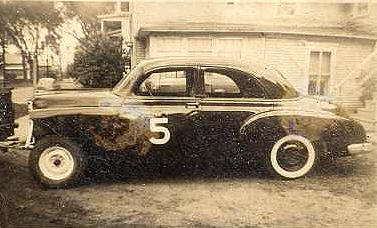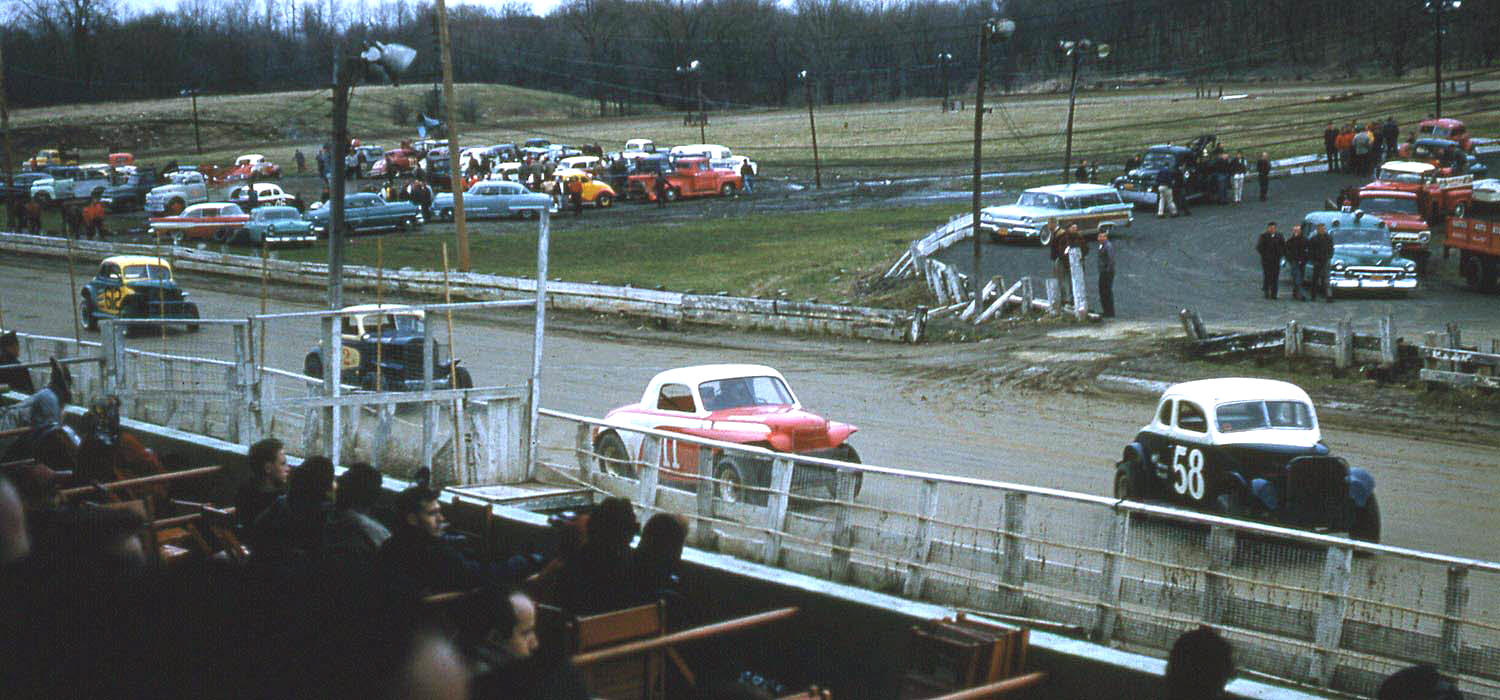
From Dan Ody's 8MM Old
Speedways DVD's
George Baumgardner, one of Welch’s hired drivers and a survivor of the
pre – was open wheel days, also appeared with a Chevy business coupe
fielded by Johnstown, NY’s Red Cromer. I have heard that there were
only about two of these cars, which changed hands a number of times;
but, none of the three above – mentioned cars looked much alike – in
terms of body modifications and such. There are also a few John Grady
shots of a #12A which Roger Gauthier drove. The car, an unusual three
window Chevy business coupe was owned b y Donald Gallo of Schenectady.
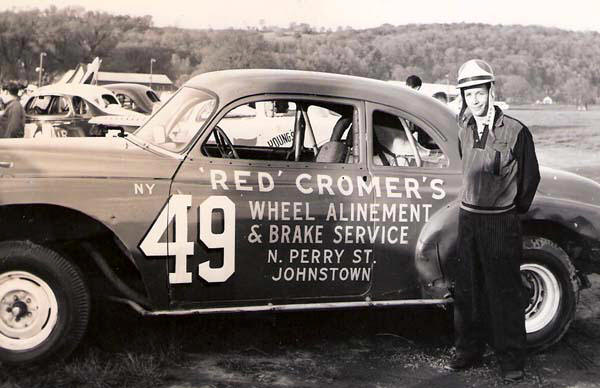
Courtesy of Otto Graham
George Baumgardner poses at
Fonda with the Red
Cromer 49. [Courtesy of Jo Towns, via Otto Graham] Below -
Gauthier manages a consi win in the
uncompetitive Gallo car. Below that – Gauthier tries to hold off the
speedy Pete Corey.

John Grady Photo
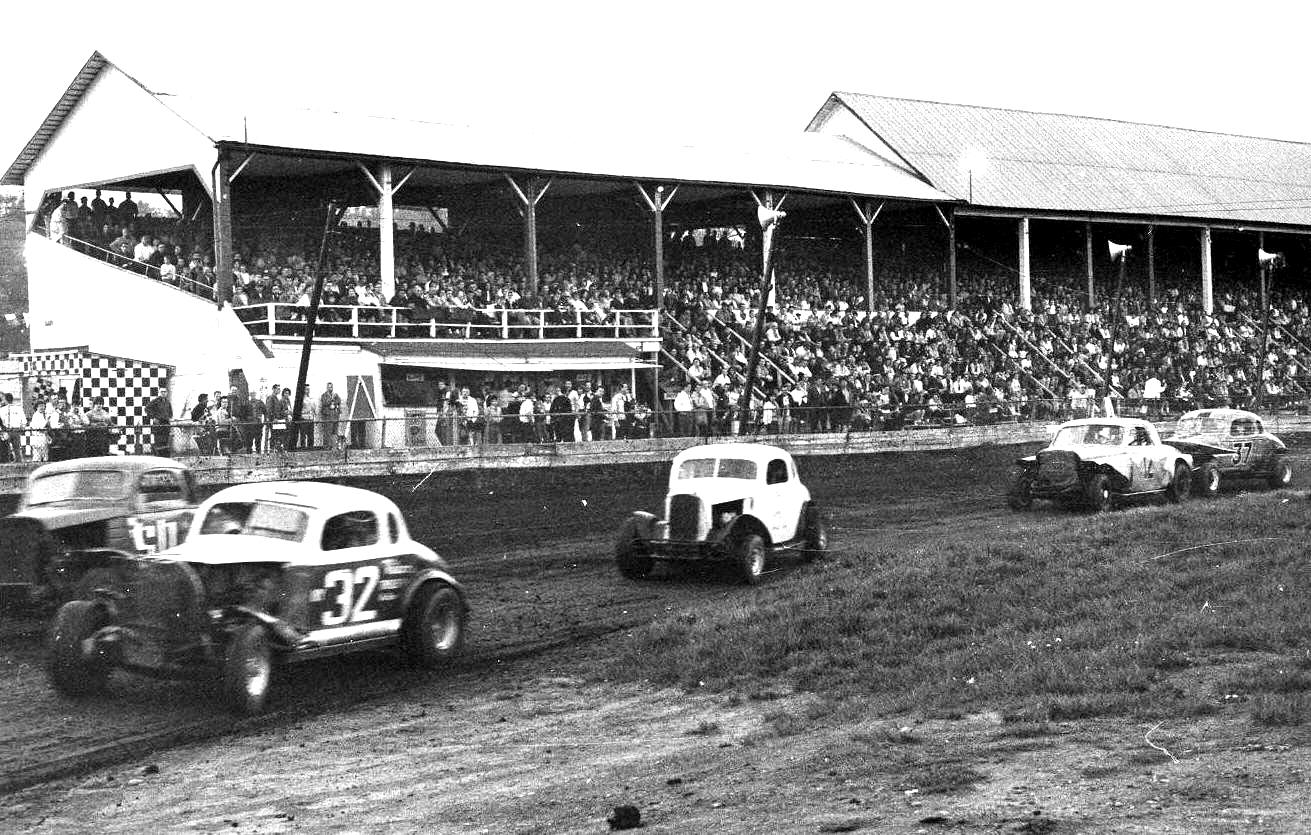
John Grady Photo
Fonda rival, the Lebanon Valley Speedway, in New Lebanon, NY, also
went through a similar period of experimentation with the late model
body. Here, the advantage / choice was much clearer. Those choosing to
run the traditional pre –war bodies had to run flathead [or maybe six
cylinder] engines; anyone opting to run a late model body could
install an overhead V-8 engine. Unlike Fonda, the late model became
the way to go at Lebanon Valley for a few years, from around 1959 or
1960 to somewhere around 1967.
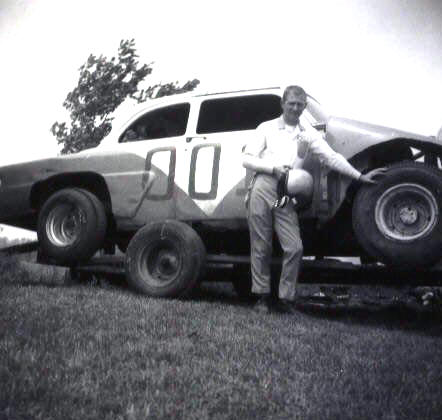
Courtesy of Visconti Family
Perhaps inspired by the
movement at Lebanon Valley, Fairmont Speedway’s Art Visconti tried
this ’53 Ford briefly around 1964.
At the Valley, many of the more successful and winning teams were
running the newer and heavier bodies. The poster boy for the late
model body was New Yorker Link Pettit, running for the Winn team out
of Great Barrington, Massachusetts. The Uncle Art Stuarts history and
record book of 1970 shows Howie Westervelt, of Ravena, winning the
track title in 1959 with a ’55 Ford; Stretch Van Steenberg, out of
Saugerties, NY, took the 1960 title with a pre – war sedan; D.D.
“Rebel” Harris won it all in 1961 with a late model Ford; and Johnny
Flach won out in 1962 with a pre – war Ford coupe. In 1963, Doug
Garrison drove Martin Riiska’s pre – war sedan to the title; but, Van
Steenberg piloted a 1955 Chevy to the win in 1964. Karl Haeussel won
in 1965 and 1966 with late models; and Ed Delmolino drove a late model
Ford to the title in 1967.
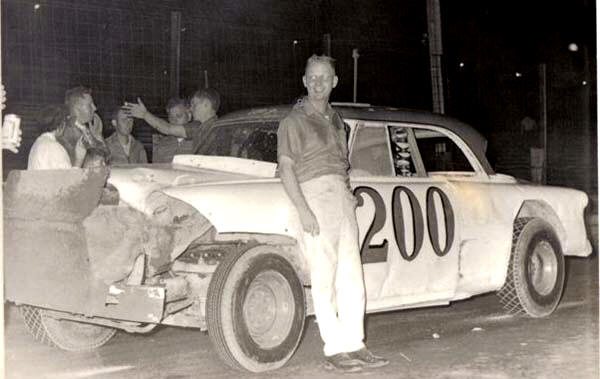
|Courtesy
of Joe Grossetti
Link Pettit, with the Winn
200, enjoys a laugh in Victory Lane at the Valley around 1960. Pettit
would run late model bodies for two different teams. Below – Dee
Goodermotte had an early Chevy body at the Valley similar to later
Fonda cars.
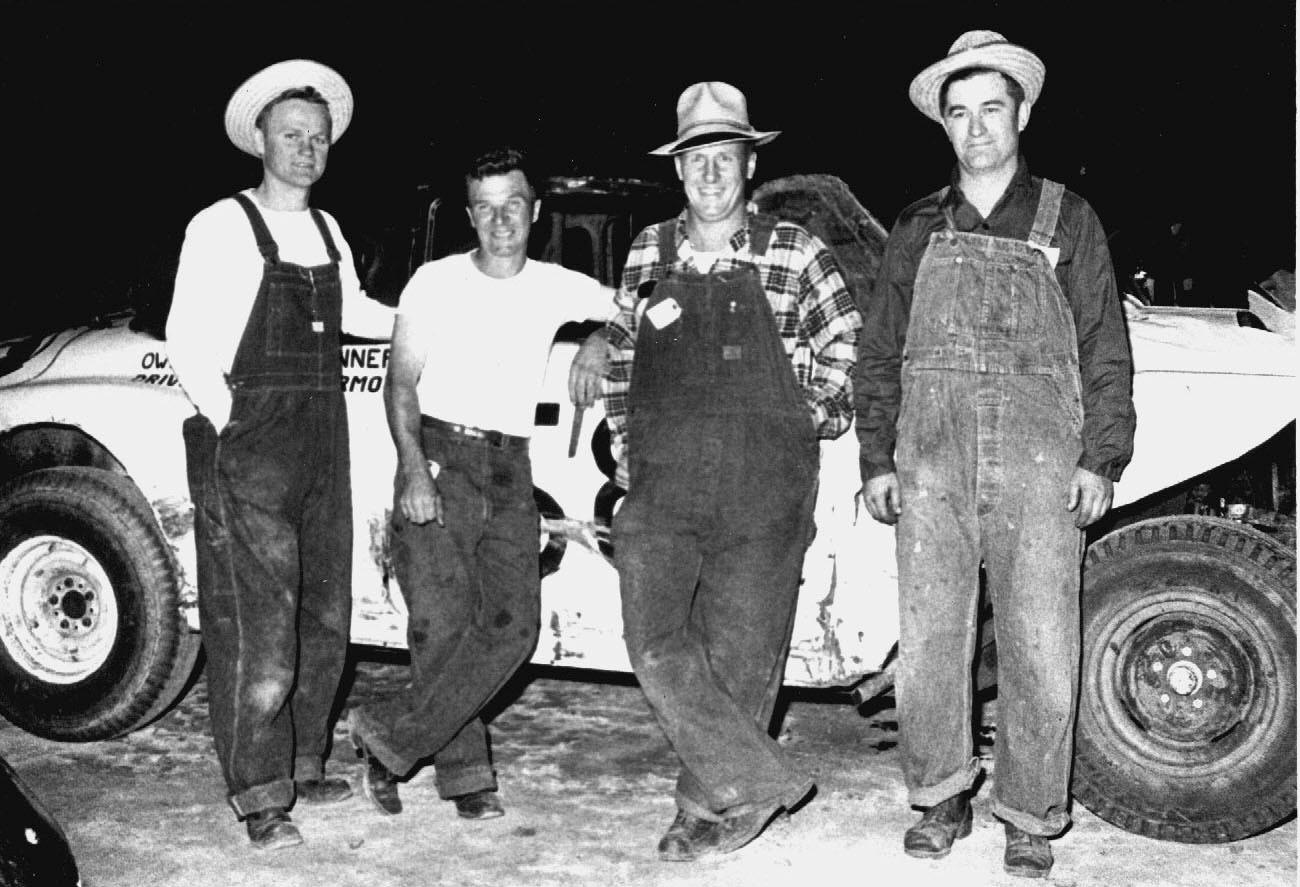
Courtesy of Chris Companion
After that, I believe the late models were either phased out or fell
out of favor at the high – banked Valley oval. While pioneering the
use of late model Falcon and Studebaker bodies at Fonda, pretty much
on his own, Pete Corey built a 1955 Chevy car just to fit in, when he
abandoned Fonda to run the Valley in the late 1960’s. Fonda finally
looked to the success of Albany – Saratoga Speedway’s semi – late
model division and instituted a late model class of its own in 1968,
much to dismay of the purists in the grandstands. The division would
spawn several future modified stars such as Harry Peek, Ken Platt,
Jerry Pennock, Ralph Holmes, and Gene Mangino, to name a few.

Courtesy of Norm Vadnais
Karl Haeussel won two
straight Valley titles with a late model – bodied car. Technically,
this one was more of the traditional type that the 1952 Chevy he had
the year before. Below – Like many others, he went back to coupes when
rules allowed.
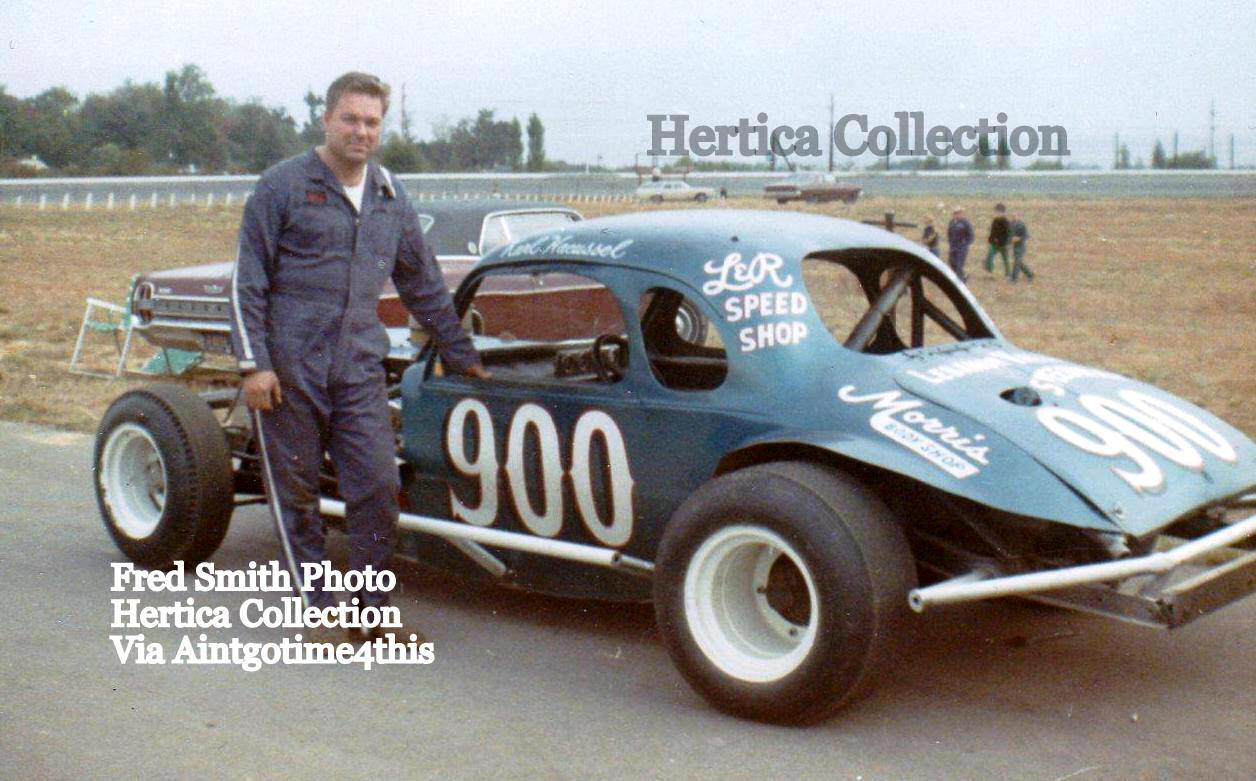
Fred Smith Photo Courtesy of Chas. Hertica
The history of Lebanon Valley Speedway is rich with late model teams,
while the late model car rated only two pages in the part of the Fonda
Speedway history book that dealt with this particular era. I saw the
influx at the Valley, with my own eyes, when the Valley group staged a
race at the Vermont State Fair in Rutland, in 1960. The late models of
Pettit, Harris, and others were just as prominent as Jelley’s #Y coupe
or Garrison’s yellow X sedan.

From Joe Lawrence Collection
via Chas. Hertica
The newly built AAA
Ford, as built by Harris and Mitchell, with support from Joe Lawrence.
Below – the car as it looked in Rutland that day, a little more used
by then.

From Uncle Art Stuarts' Book
via Mike Visconti
Harris' car – which made a big impression in Rutland, was a special
case – even for that period. Historian and photographer Chas. Hertica
says that the 1956 Ford was a combined project of Duncan “Rebel”
Harris and another former Middletown driver named Danny Mitchell.
Hertica wrote: “ This car, which was built with NASCAR componentry
acquired from Peekskill, N.Y.'s Jim Reed, who had just switched from
Ford to Chevrolet, became the scourge of the competition at Lebanon
Valley in 1961.The team of outsiders, led by wheelman DD "Rebel"
Harris, won nine of the twenty-four features run at the Valley in '61,
as well as the point championship, the first season any of them had
ever raced there.”
By the 1970’s, the late model car was pretty much totally ensconced as
a sportsman, while the modified stayed with pre – war bodies for
years. Even today, at many tracks, the late models [f not called pro
stocks] are often referred to as the sportsman division, while the
modifieds have those TEO or Bicknell – looking bodies. Back in the
day, it was a big deviation from the accepted norm to try those late
model bodies, a practice generally reserved for Bill France’s Grand
National cars; but it made like interesting for a few years in those
pivotal 1960’s

Russ Bergh Photo Courtesy of
Bob Novak
Doc Nellis'
final car was a recycled Frank Trinkhaus late model.
Please email me if you have
any photos to lend me or information and corrections I could benefit from.
Please do not submit anything you are not willing to allow me to use on my
website - and thanks. Email is:
wladabou@comcast.net . For those who still don’t like computers - my
regular address is: Bill Ladabouche, 23 York Street, Swanton, Vermont 05488.
